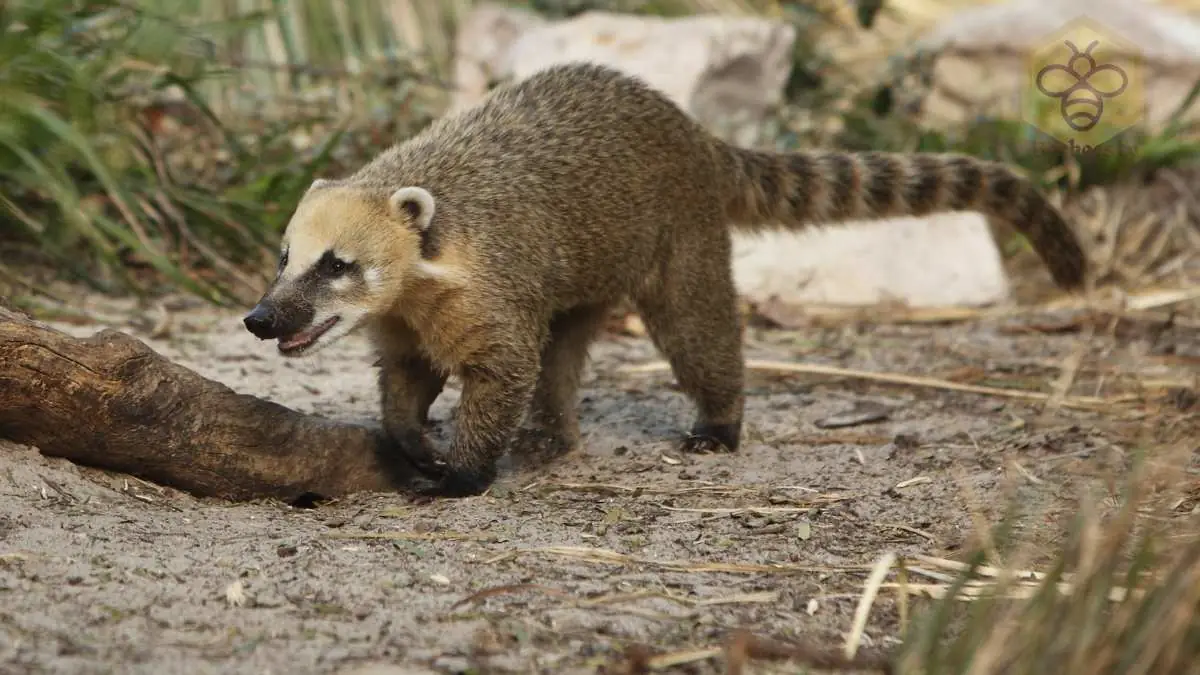Coati: The Curious and Clever Mammal of the Americas
Coati
Introduction
The coati is a playful, intelligent, and highly adaptable mammal found in the forests and grasslands of the Americas. Known for its ringed tail, elongated snout, and mischievous behavior, this relative of the raccoon is an excellent climber and forager. Coatis are social animals, often seen in groups, and they play an important role in maintaining the balance of their ecosystems.
Scientific Overview
Scientific Name
Nasua (Genus)
Common Name
Coati (also known as coatimundi)
Scientific Classification
| Kingdom | Animalia |
| Phylum | Chordata |
| Class | Mammalia |
| Order | Carnivora |
| Family | Procyonidae |
| Genus | Nasua and Nasuella |
Types of Coatis
Coatis belong to two main genera and are divided into four recognized species:
- White-Nosed Coati (Nasua narica) – Found in North and Central America.
- South American Coati (Nasua nasua) – Inhabits forests of South America.
- Western Mountain Coati (Nasuella olivacea) – Lives in the Andes mountains.
- Eastern Mountain Coati (Nasuella meridensis) – Found in Venezuela’s high-altitude forests.
Habitat and Distribution
Coatis are native to North, Central, and South America, thriving in a variety of habitats, including:
- Tropical rainforests – Their preferred home, providing food and shelter.
- Grasslands and savannas – Open landscapes with scattered trees.
- Mountain forests – Found at elevations up to 3,000 meters.
- Urban areas – Adapted to living near humans, often scavenging for food.
They are commonly found in Mexico, Brazil, Argentina, Colombia, and Ecuador, as well as parts of the southern U.S.
Physical Characteristics
Size and Weight
- Length: 16–26 inches (41–66 cm) without the tail.
- Tail Length: 18–24 inches (45–61 cm).
- Weight: 4.4–17.6 pounds (2–8 kg).
Appearance
- Long, flexible snout used for sniffing out food.
- Sharp claws for climbing and digging.
- A ringed tail that helps with balance but is not prehensile.
- Fur color varies from reddish-brown to grayish-black.
Diet and Feeding Habits
Coatis are omnivores, meaning they eat a mix of plant and animal matter. Their diet includes:
- Fruits and berries – A major food source.
- Insects and small vertebrates – Such as lizards, frogs, and bird eggs.
- Roots and nuts – Dug up using their claws.
- Carrion – Sometimes scavenging dead animals.
Coatis use their long snouts and strong claws to search for food under leaves, rocks, and soil.
Predators and Threats
Despite being agile climbers and fast runners, coatis have several natural predators, including:
- Jaguars and ocelots – Stealthy feline hunters.
- Snakes – Large constrictors like boas prey on young coatis.
- Birds of prey – Eagles and hawks target baby coatis.
Human activities such as deforestation, hunting, and urban expansion also threaten their populations.
Reproduction, Babies, and Lifespan
- The mating season occurs between early spring and summer.
- The gestation period lasts about 77 days.
- Females give birth to 2–7 babies (kits) in nests high in trees.
- Lifespan: 7–8 years in the wild, up to 15 years in captivity.
After giving birth, females raise their young alone, while males are mostly solitary.
Population and Conservation Status
- Coatis are not currently endangered, but habitat loss poses a risk.
- They are hunted for their fur and as pets, reducing wild populations in some areas.
- Some national parks and wildlife reserves protect coati populations.
Behavior and Lifestyle
- Social animals – Females and young live in groups called bands (10–30 members), while males are solitary.
- Diurnal – Active during the day, unlike raccoons.
- Highly intelligent – Can solve problems and remember food sources.
- Playful nature – Young coatis engage in wrestling and chasing games.
Ecological Role
Coatis are essential to their ecosystems by:
- Spreading seeds – Eating fruits and dispersing seeds through their waste.
- Controlling insect populations – Helping maintain ecological balance.
- Providing food for predators, and keeping the food chain stable.
FAQs About Coatis
1. Are coatis related to raccoons?
Yes! Coatis belong to the Procyonidae family, making them close relatives of raccoons, kinkajous, and ringtails.
2. Can coatis be kept as pets?
While some people keep coatis as exotic pets, they require special care, space, and socialization, making them unsuitable for most households.
3. Do coatis climb trees?
Yes, coatis are excellent climbers, often sleeping in trees and using their sharp claws to navigate branches.
4. What sounds do coatis make?
Coatis communicate with chirps, whistles, and snorts, especially when warning their group of danger.
5. Are Coatis aggressive?
Coatis are generally friendly and curious, but males can become aggressive during the breeding season.
Conclusion
The coati is a unique, social, and intelligent mammal that thrives in the forests of the Americas. With their playful nature, climbing skills, and a strong sense of community, coatis are fascinating creatures that play a crucial role in their ecosystems. Although they are adaptable, deforestation and human expansion pose challenges to their future. By understanding and protecting coatis, we can help ensure their survival for generations to come.
